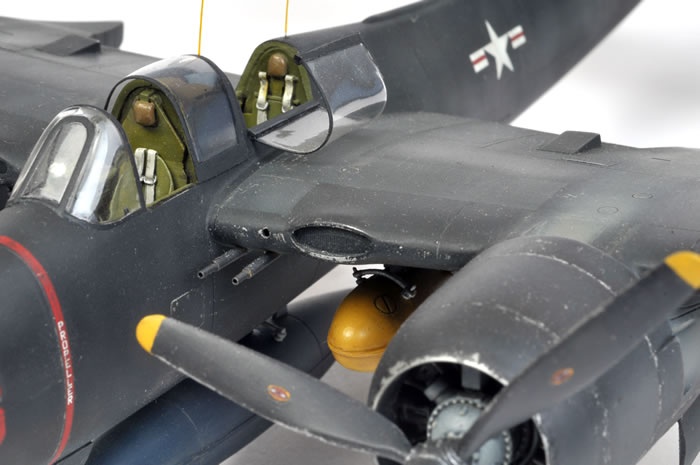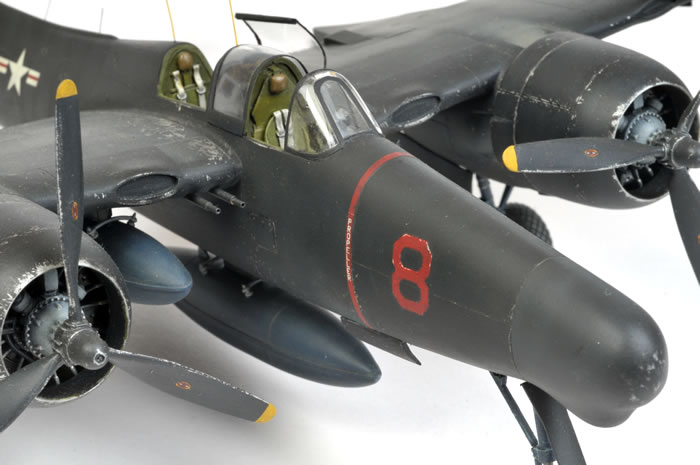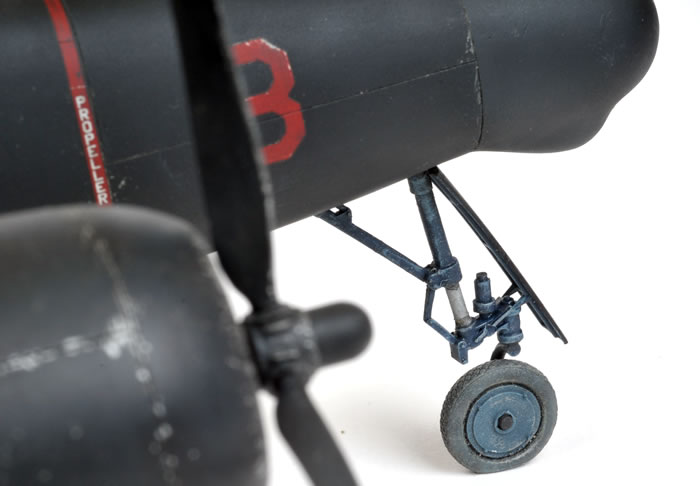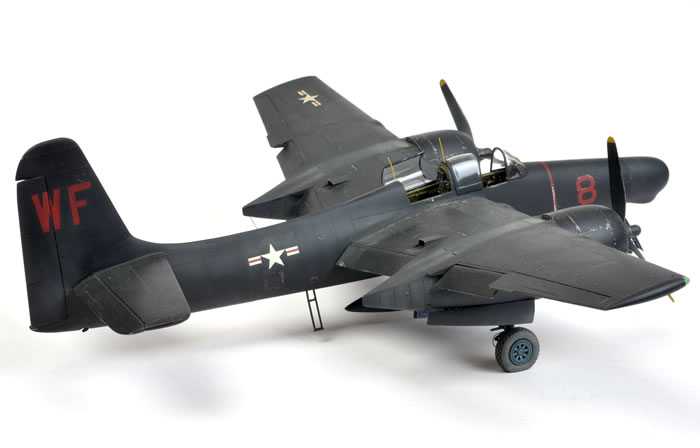|
AMT's 1/48 scale
Grumman F7F-3N Tigercat
by Mike Prince

|
Grumman F7F-3N Tigercat |

Italeri's 1/48 scale F7F-3N Tigercat is available online from Squadron.com
This is AMT’s original 1/48 scale boxing of the Grumman F7F-3N Tigercat. The kit has since been re-released by Italeri with a few improvements.
A substantial amount of work has gone into this kit.

Although the kit cockpits could respond well to careful painting and dry brushing, I used the magnificent upgrade sets from the now defunct Cutting Edge, along with the radome section of their replacement resin nose (the rest of the nose is filled with several lead fishing sinkers). The radome makes a significant difference as it is both wider and deeper than this area of the kit nose.

Leaving the two halves of the kit nose splayed outward about 1mm at the back of the radome, and 2mm at the tip, then adding some bulk to the bulge on the lower side of the radome will achieve a similar result.
While I used resin wheels to replace the AMT offerings, Italeri has since replaced the vinyl tyres of the original boxing.
The undercarriage is quite delicate on this kit. I therefore replaced the nose wheel leg with a section of brass rod and tube, the upper section sleeved to increase its diameter. The rod extends all the way into the nose. The upper ends of the main legs were drilled out and more brass rod used to again extend them all the way into the roof of the wheel well. Although not strictly correct, once painted these extensions are unnoticeable, and the kit has survived a few display days as proof that the theory works.

Additional work included detailing the wheel wells (effort which few have ever seen), dropping the flaps and repositioning the rudder and elevators. Vacform canopies replaced the kit items. The exhaust openings on the lower side of each cowl were filled with sheet plastic which was then filed and reshaped to remove the moulding step and give the area some curve (just like bigger versions of the side openings), while the various antennae came from the bristles of a (new) toothbrush, the advantage being they are both very fine and virtually indestructible. As moulded, the AMT propellers have an unusually shaped leading edge near the hub – a bit of careful filing to a more normal shape took care of this. Don’t worry about some photos showing squared propeller tips, they were often cropped in the field to minimise tip damage as a result of the very low ground clearance.

The model was finished with Humbrol enamels throughout. It was initially painted silver and left for this to well and truly harden, before being over-sprayed with a 50 / 50 mix of Humbrol 33 Matt Black and Humbrol 67 Tank Grey. The latter was also used by itself for the walkway areas. While the “black” was still soft it was then scratched and scraped with an old scalpel to achieve a worn look. Markings came from the kit but were toned down with a streaky black wash, while the exhaust trails were achieved using heavily thinned medium grey with a touch of brown near the centres. The same dirty brown / grey was later used to dust the whole model, some panels receiving more attention than others. The final finish was achieved with a 70/30 mix of Humbrol matt and satin clear.
Model and Text Copyright © 2009 by Mike Prince
Images of Completed Model Copyright © 2009 by Brett Green
Page Created 7 October, 2009
Last Updated
8 October, 2009
Back to HyperScale
Main Page |
Home
| What's New |
Features |
Gallery |
Reviews |
Reference |
Forum |
Search